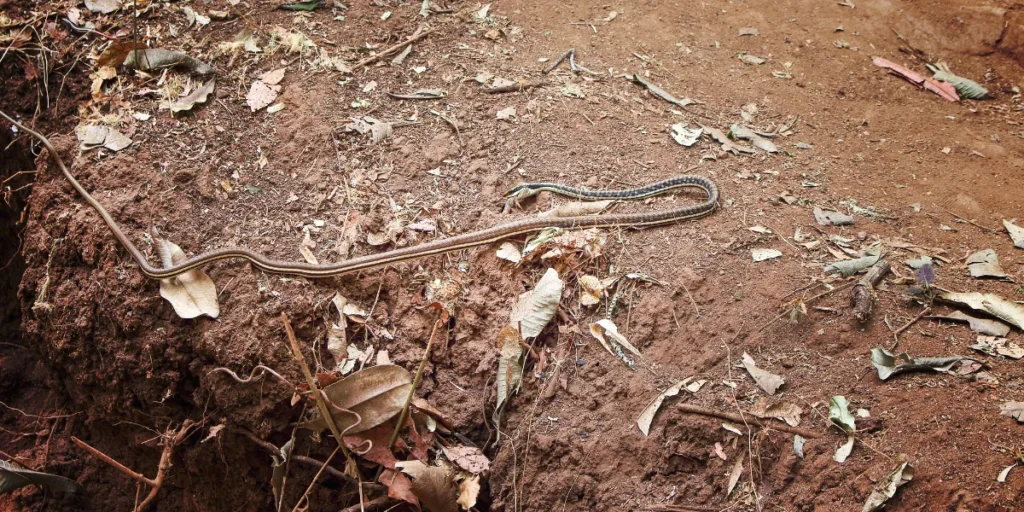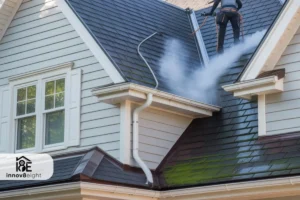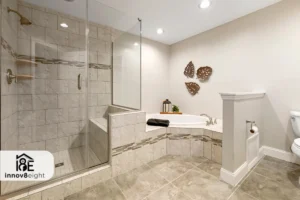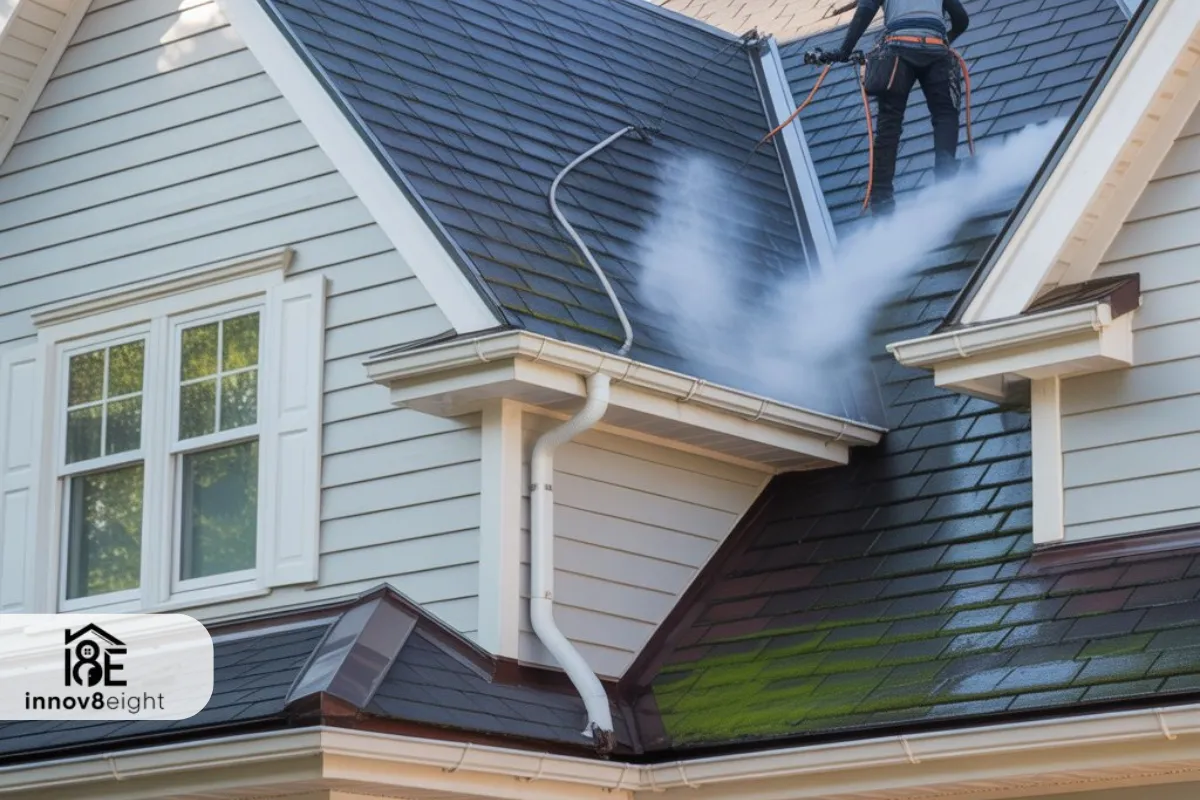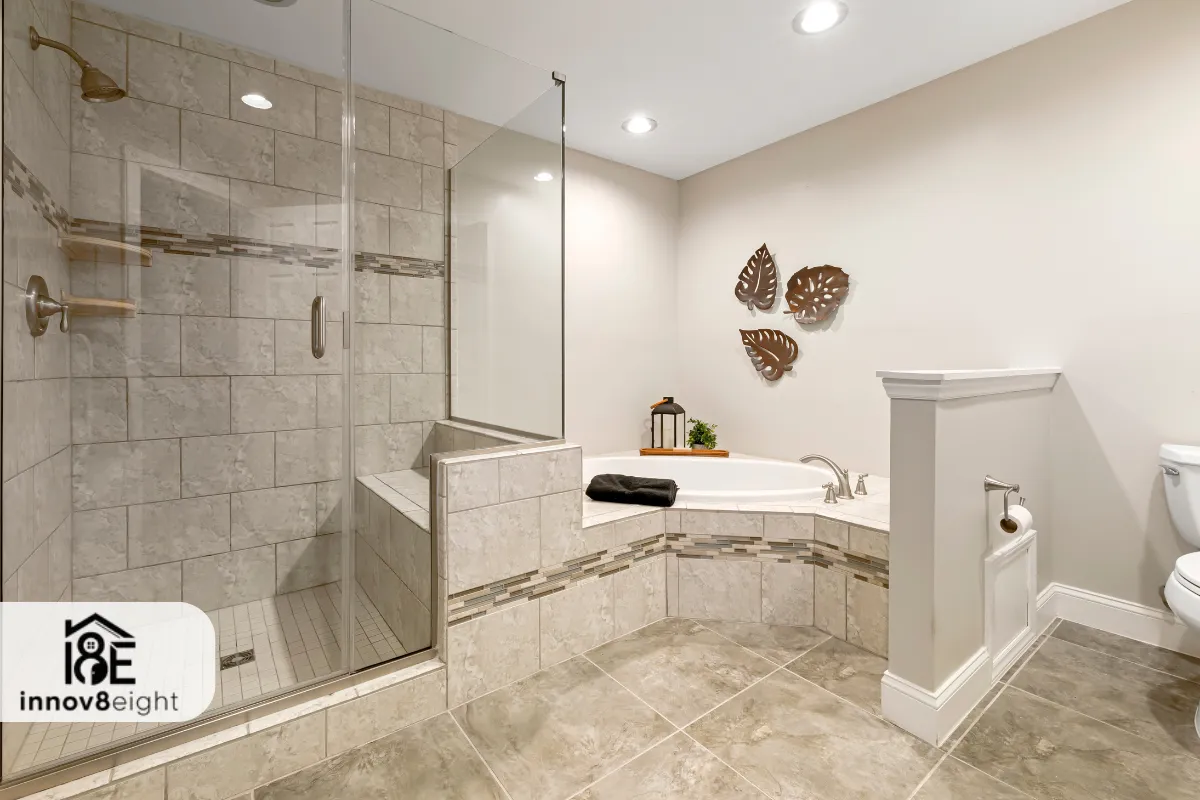Understanding Snake Holes in the Ground
Have you ever noticed small round holes in your yard or garden and wondered if they could be snake holes in ground? You’re not alone. Many homeowners spot these mysterious openings and instantly panic — imagining a snake slithering out at any moment.
Let’s calm your nerves. Not every hole you see belongs to a snake. In fact, most of the time, snakes take advantage of holes already made by other animals like rodents or moles. So, if you’ve been asking yourself, “Do snakes make holes in the ground?” the short answer is no, not usually.
Snakes don’t have the claws or limbs to dig. Instead, they look for ready-made burrows to stay warm in winter or to hide from predators. These snake holes in the ground can often be found near grassy areas, under rocks, or around building foundations — quiet spots that offer safety and shade.
Key insight:
Snakes are more likely to use existing burrows than to dig their own, but they can enlarge them slightly with body movement.
What Do Snake Holes Look Like?
If you want to identify a snake hole in ground, you’ll need a sharp eye for details. Snake holes can vary in size and shape, depending on the snake species and the soil type.
- Shape: Usually round and smooth-edged.
- Size: Between 1 to 3 inches wide.
- Location: Near rocks, trees, debris piles, or sunny areas where snakes can easily bask.
You can also look for signs of snake activity near the hole:
- Shiny shed skin fragments
- Slither tracks around the hole
- Droppings that look like dark, moist pellets with white tips
If you’re curious, you can find many pictures of snake holes in the ground online — they’ll help you compare what you see in your yard.
But be careful. It’s not a good idea to poke around these holes. If a snake is inside, it might feel threatened and strike in defense.
Tip: Instead of disturbing it, observe from a safe distance or use a camera zoom.
Why Snakes Use Holes and What It Means for You
So, why exactly do snakes love these snake holes in the ground so much? The answer is simple — comfort and safety. Snakes are cold-blooded animals, which means they rely on their environment to regulate their body temperature. The holes in the ground provide them with the perfect place to hide from heat, cold, and danger.
Here are the main reasons snakes use holes:
- Protection from Predators – Holes act as safe shelters where snakes can hide from birds, foxes, or even humans.
- Temperature Control – The soil helps keep them cool during the hot months and warm during the cold season.
- Rest and Hibernation – Some snakes enter a deep rest called brumation in winter, and holes in the ground become their cozy hideouts.
- Hunting Strategy – Snakes might wait inside holes made by rodents or frogs to catch easy prey passing by.
If you’ve ever asked, “Do snakes live in holes in the ground?” — the answer is yes, absolutely! Many snake species prefer living in these underground shelters because they provide safety and the perfect spot for hunting.
However, most snakes using these snake holes in ground are non-aggressive. They don’t dig holes just to attack; they simply seek a safe and quiet place to live.
When people wonder, “Do snakes dig holes in the ground?” — it’s important to note that snakes don’t actually dig like moles or rats. They use or enlarge holes already made by others. So, if you’re seeing snakes holes in the ground, it’s usually because other small animals once lived there.
Emotional insight:
It’s natural to feel uneasy knowing snakes might be living nearby, but remember — they play an important role in keeping pests under control. Without them, rodent populations could grow fast, creating bigger problems for your home and garden.
How to Tell if a Snake Hole Is Active
Not all snake holes in the ground are active. Some might be old burrows that snakes used long ago. So, before panicking, let’s find out how to tell if a snake is still living there.
Look for these signs of activity:
- Fresh Tracks: Slithering patterns or smooth marks in the soil.
- Shed Skin: A sure sign that a snake has been there recently.
- Droppings: Snake droppings are long, dark, and sometimes have a white chalky tip.
- Warm Soil: If you touch the ground around the hole and it feels warmer than other areas, it might still be in use.
If you notice these clues, it’s best not to disturb the hole. Snakes are shy but can become defensive if they feel cornered.
Safety Tip:
Keep pets and children away from the area. Then, if needed, contact a local wildlife control expert to inspect it safely.
What to Do if You Find Snake Holes in Your Yard
Finding snake holes in the ground near your home can be unsettling — but don’t panic. Remember, snakes are not out to harm you; they just want a quiet, safe place to live. Still, it’s smart to handle the situation carefully. Here’s how to do that the right way.
Step 1: Stay Calm and Observe from a Distance
If you notice snakes holes in ground, resist the urge to poke or pour anything inside. Doing that might make the snake defensive. Instead, observe quietly from a safe distance. Try to note:
- The size and number of holes
- Whether you see movement
- Any shed snake skin or tracks nearby
This helps you know if the hole is active or old.
Step 2: Keep the Area Clean and Clutter-Free
Snakes are drawn to messy, shaded places with lots of hiding spots. Remove piles of leaves, logs, wood, or trash. Trim overgrown grass and keep your yard tidy. This makes it less appealing for snakes and other animals that make holes.
Step 3: Block Unused Holes Safely
If you confirm a hole is not active, you can fill it up. Use soil, gravel, or mesh to block the opening. But before doing that, make sure no animal is inside. You can place a piece of light cloth or plastic over the hole and check after a day — if it’s undisturbed, it’s likely empty.
Step 4: Eliminate Food Sources
Snakes usually move in when there’s food around — like rats, frogs, or insects. Use traps or call pest control to remove rodents. Once the food is gone, snakes will likely move out too.
Step 5: Use Natural Repellents
You can try simple, non-toxic repellents like:
- Cinnamon or clove oil sprayed around the area
- Garlic water or white vinegar along walls and fences
- Mothballs (careful with pets and kids)
These smells make it uncomfortable for snakes to stay near snake holes in ground.
Step 6: Call a Professional
If you’re unsure or the hole looks active, contact a wildlife removal expert. They can safely identify whether it’s a snake hole in ground or something else — and relocate the snake humanely if needed.
Remember: Never try to handle or trap a snake yourself unless you’re trained.
Common Mistakes People Make
When people find snake holes in the ground, fear often leads to bad decisions. Here are the most common mistakes you should avoid:
- Pouring boiling water or chemicals into the hole — this is cruel and can damage your soil.
- Trying to dig the snake out — dangerous and unnecessary.
- Using random store-bought repellents without checking ingredients.
- Blocking a hole without checking if something is inside.
Avoiding these mistakes protects both you and the environment.
How to Prevent Snake Holes in the Future
Prevention is always better than panic. Once you’ve dealt with existing snake holes in the ground, it’s time to make sure they don’t come back. Luckily, you don’t need harsh chemicals or expensive tools — just a few smart habits can keep your yard snake-free.
Keep Your Yard Neat and Bright
Snakes love peace, shade, and clutter. That means tall grass, piles of wood, or scattered debris make your yard a perfect hiding spot. To stop new snakes holes in the ground from appearing:
- Mow your lawn regularly.
- Remove rocks, boards, or junk lying around.
- Keep your garden sunny and open — snakes avoid bright, exposed places.
The cleaner your yard, the fewer reasons snakes will have to move in.
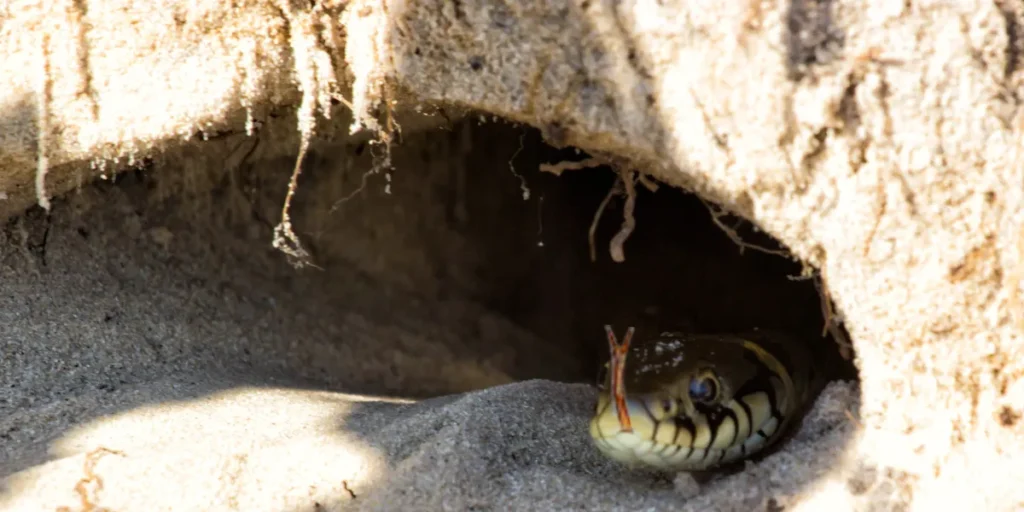
Seal Entry Points and Burrows
If snakes can’t find holes, they can’t settle in. Check for gaps under sheds, porches, or fences, and seal them using mesh, foam, or gravel. Snakes often use old rodent tunnels, so controlling rodents is key. If you remove the holes in the ground, snakes lose both their shelter and their food source.
Pro tip: After heavy rain, re-check your yard — new soil erosion can create fresh holes that might attract snakes.
Use Natural Barriers and Repellents
You can protect your yard’s borders using gentle, natural methods. Try:
- Sprinkling sulfur powder or clove oil along fences and foundations.
- Planting marigold or lemongrass, as their scent naturally repels snakes.
- Using garlic water spray near garden beds.
These remedies don’t harm wildlife but make the area uncomfortable for snakes to settle.
Manage Food Sources
Snakes won’t stay where they can’t eat. If you’ve ever wondered “Do snakes dig holes in the ground?”, remember — they don’t dig just to live; they follow prey like rats or frogs that already live underground. Keep pet food indoors, fix leaky pipes (which attract frogs), and seal trash cans tightly.
Eliminating these small animals reduces the chances of snakes returning to those snake holes in ground again.
Encourage Natural Predators
Some harmless animals, like owls and hawks, help keep snake populations in check. Installing a birdhouse or perch pole can invite these natural hunters to your area, creating a healthy balance without using chemicals.
Regular Inspection and Maintenance
Finally, make it a habit to check your yard once a month. Walk around, look for holes in the ground, and notice any slither tracks or shed skin. Early detection lets you take quick action before snakes make themselves at home.
Bottom line:
You can easily prevent snake holes in the ground from returning by keeping your yard clean, sealing openings, and removing their food and shelter sources. The goal isn’t to harm snakes — it’s to make your space uninviting for them. With a bit of consistency and care, you can enjoy a peaceful, snake-free yard all year long.
Final Thoughts on Snake Holes in the Ground
Finding snake holes in the ground near your home can be a little nerve-wracking, but understanding them is the first step to staying calm and in control. Most snakes don’t dig holes or create new tunnels. Instead, they quietly move into holes in the ground made by other creatures — especially rodents, frogs, or insects.
So, if you’ve been wondering, “Do snakes make holes in the ground?” or “Do snakes dig holes in the ground?” — the truth is, no, snakes usually don’t dig holes in ground themselves. They simply use them for warmth, protection, or nesting.
The good news? You can safely manage and prevent these snake holes in ground with just a few simple steps:
- Keep your yard neat and clutter-free.
- Remove food sources like rodents.
- Seal unused burrows and openings.
- Use natural repellents and invite natural predators.
Remember, snakes aren’t your enemies — they’re actually part of a healthy ecosystem. They help control pests and keep your surroundings balanced. The key is to respect their space while ensuring they don’t feel too comfortable living in yours.
If you ever feel unsure about a snake hole in ground, don’t try to handle it on your own. Instead, call a professional wildlife expert. They can safely inspect, identify, and, if necessary, relocate the snake without harm.
Emotionally speaking, it’s comforting to know that once you understand what’s happening beneath your feet, fear turns into knowledge — and knowledge turns into confidence.
So next time you spot a suspicious hole, you’ll know exactly what to do:
Stay calm, observe, identify, and act wisely.
Your yard can stay safe, clean, and snake-free — all without panic or poison.
Main Takeaways
- Snakes rarely dig their own holes; they use existing ones.
- Pictures of snake holes in the ground can help you identify them safely.
- Most species living in snake holes in the ground are harmless.
- Prevention starts with cleanliness and awareness.

